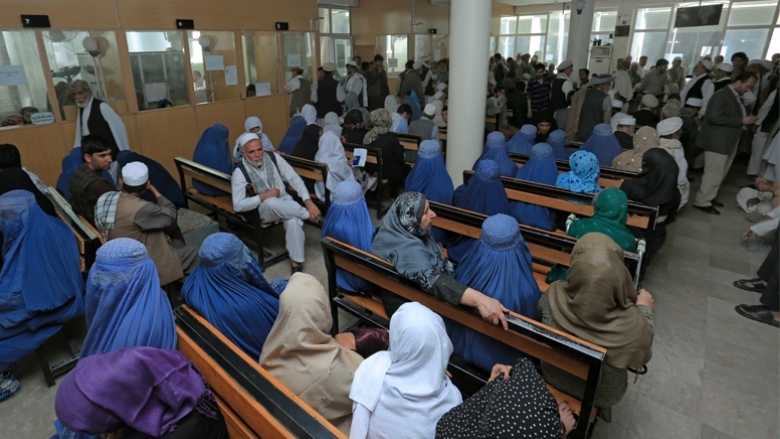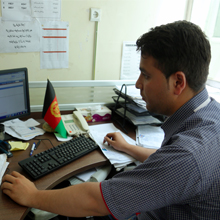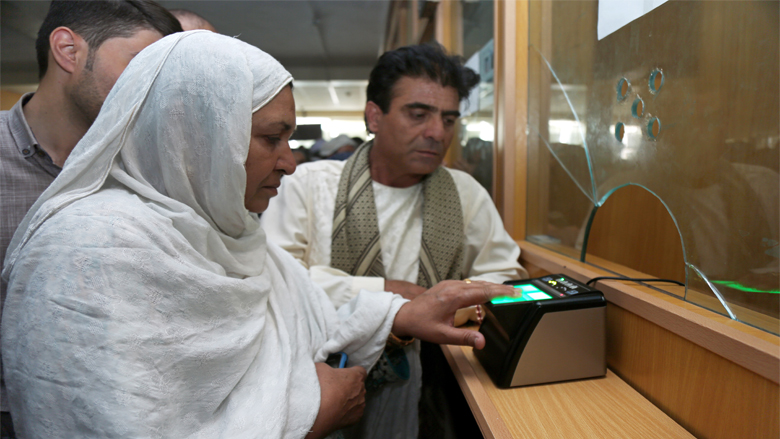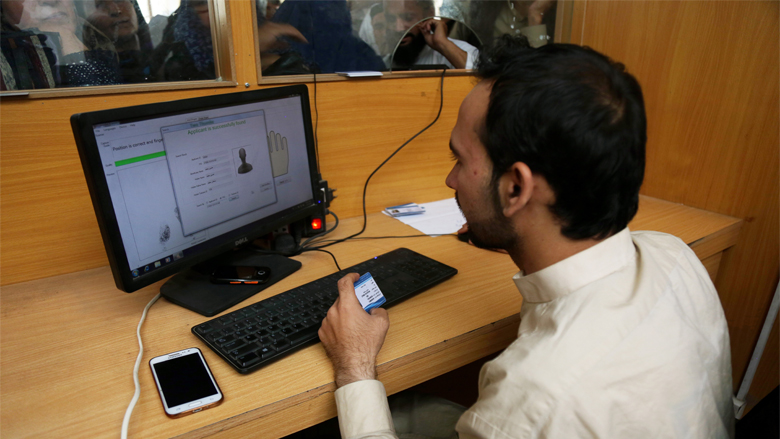KABUL – (متقاعدین د هیواد تل پاتې ویاړ دی) “” is the motto written in Pashto on a whitewashed wall of a huge hall filled with retired men and women. They are waiting their turn to have their biometric data entered into computers.
Abdul Hafiz, 66, is standing in line, ID papers in hand. He has retired after 35 years of working in the Ministry of Interior. He is here at the Pension Department of the Ministry of Labor and Social Affairs (MoLSA) to complete the procedures that will make his retirement official.
The system at the central Pension Department in Kabul went from a manual to a modern, computerized Management Information System (MIS) with the support of the Afghanistan Pension Administration and Safety Net Project, which operated under MoLSA. The project, closed in December 2017, aimed to improve the administration of the public sector pension scheme and develop administrative systems for safety net interventions. It was supported by a grant from the International Development Association (IDA), the World Bank Group’s fund for the poorest countries.
While preparations for digitizing the Afghan pension system started in 2010 under the first phase of the project, actual rollout of the new system commenced in 2013. . “I do not know much about the procedure and computers or digital systems, but I know the electronic system does the work faster with [greater] accuracy,” says Hafiz as he waits patiently among hundreds of people in the hall.




